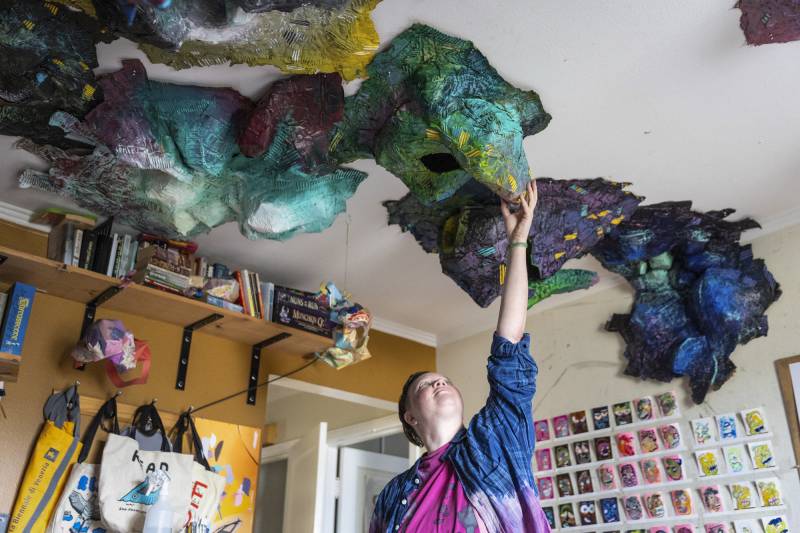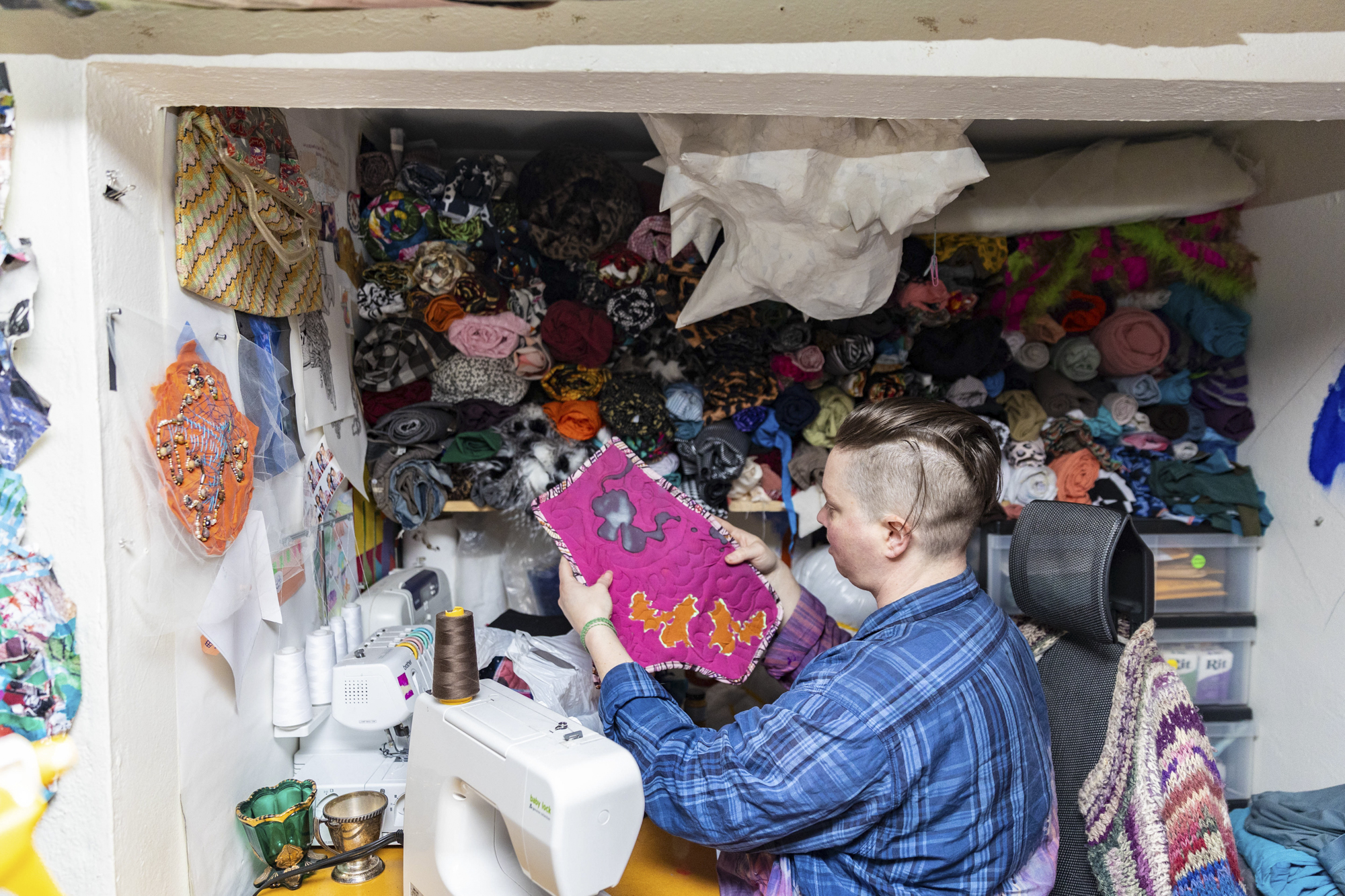If you’re a disabled San Franciscan who can’t make it to a museum, art can come to you thanks to Art Museum From Bed by M Eilo.
Eilo loans out interactive sculptures, or Sensation Models, that one can hug and cuddle. Most of them engage multiple senses. And if you accidentally drop your art piece, or your pet or child knocks it over, no problem. Eilo designed it with the realities of home display in mind.
Eilo is a disabled San Francisco artist who lives with autism and chronic illnesses, and their work centers disabled audiences. They’re known for using artificial intelligence to build computational prosthetics, wearable art pieces that perform social and bodily tasks like smiling or logging memories. They also run an online series called Art School From Bed, short videos about art history and technique specifically for other artists who are chronically ill.

Eilo has been making textile sculptures — from handheld to furniture-scale pieces — for nearly 20 years. To create art in the shape and texture of their chronic hemiplegic migraines, they began crocheting sofa-size sculptures in 2006. During the 2010s, they shifted to making Wearable Pillows, accessories that are both decorative and supportive of their body when passing through harsh and inaccessible spaces.
Two years ago, Eilo began experimenting with Sensation Models. Made from an assortment of reclaimed materials including used rope and unraveled knitwear, the semi-soft, semi-flexible, amorphous forms arose out of Eilo’s desire to get beyond pain scales that doctors often use. Like many, Eilo feels constrained by charts and questions such as, “On a scale of 1-10, how much does it hurt?” Instead, they imagine alternative methods for expressing the sensations their body enjoys and endures. Lumpy purple tentacles and pink patchwork blobs feel much more expressive.

“When I started Sensation Models, I challenged myself to expand beyond my own body and make works for the homes, bodies and lives of my disabled neighbors across the Bay Area,” Eilo explains. From the beginning, the idea was to lend these pieces out. After they return to Eilo, they are cleaned and quarantined before they move to the next home.




